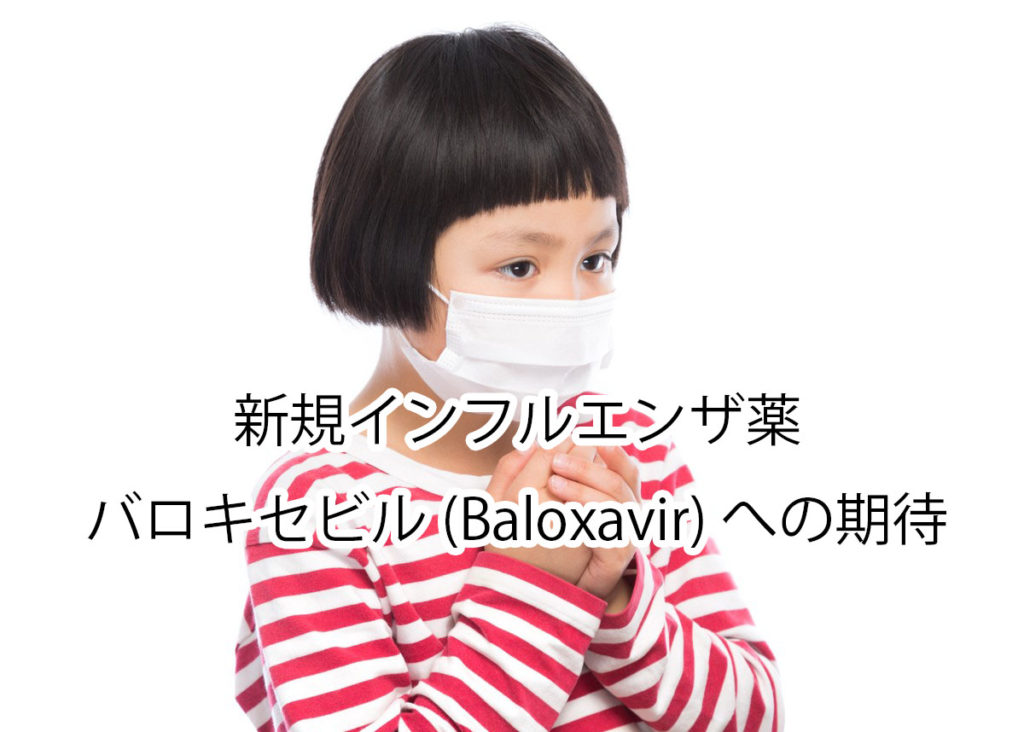今年は例年と比べてインフルエンザの流行がすごかったようですね。
インフルエンザの治療薬は一般的に、
1日2回5日間経口投与するタミフル(オセルタミビル)、
1日2回5日間吸入投与するリレンザ(ザナミビル)、
単回吸入投与するイナビル(ラニナニビル)、
単回点滴投与するラピアクタ(ペラミビル)、
の4つが用いられていましたが、いずれもインフルエンザウイルスのノイラミニダーゼを阻害する薬でした。
単回で終了するイナビルが広く用いられるようになっていましたが、吸入が困難であったり、牛乳アレルギーの方に使いにくかったりしました。
また、ドライシロップもあるタミフルは、小児に好まれますが、異常行動を恐れて処方しにくい医師も多くいるのが現状でした。
そこで今回、新規インフルエンザウイルス薬として登場間近なのが、ゾフルーザ(バロキサビル)と呼ばれるキャップ依存性エンドヌクレアーゼを阻害する薬です。
こちらは、経口かつ単回投与の薬で、大人はもちろん、小児にも非常に利便性が高く、さらには新規メカニズムであるため、非常に期待されています。
こちらの薬は、平成30年2月2日に薬事食品衛生審議会医薬品第二部会において医薬品として承認審査を受けることになっています。
一般名バロキサビル マルボキシル(Baloxavir marboxil)は、塩野義製薬が開発し、S-033188として治験を乗り越えてきました。
第三相試験は、2016年11月1日から2017年4月22日かけて行われています。
A Study of S-033188 (Baloxavir Marboxil) Compared With Placebo or Oseltamivir in Otherwise Healthy Patients With Influenza (CAPSTONE 1)
今回は、Oxford academicのOpen Forum Infectious Diseasesに掲載されていたOpen accessのアブストラクトを紹介します。
Cap-dependent Endonuclease Inhibitor S-033188 for the Treatment of Influenza: Results from a Phase 3, Randomized, Double-Blind, Placebo- and Active-Controlled Study in Otherwise Healthy Adolescents and Adults with Seasonal Influenza
インフルエンザ治療のためのキャップ依存性エンドヌクレアーゼ阻害薬S033188:第三相無作為二重盲検試験(季節性インフルエンザの青年と成人に対するプラセボ-実薬対照試験)の結果
Simon Portsmouth, Keiko Kawaguchi, Masatsugu Arai, Kenji Tsuchiya, and Takeki Uehara
https://www.ncbi.nlm.nih.gov/pmc/articles/PMC5631501/
Background
Cap-dependent endonuclease (CEN) resides in the PA subunit of influenza virus polymerase and mediates the “cap-snatching” process during viral mRNA biosynthesis. S-033188 is a potent, selective, small molecule inhibitor of CEN. Here we report clinical and virologic outcomes from a global Phase 3 study CAPSTONE-1.
キャップ依存性エンドヌクレアーゼ(CEN)はインフルエンザウイルスポリメラーゼのPAサブユニットに存在し、ウイルスのmRNA生合成の中の“キャップ・スナッチング”過程を介在する。S-033188は、CENに対する強力かつ選択的な小分子阻害剤である。ここに私たちは、グローバルな第三相試験であるCAPSTONE-1の臨床的かつウイルス学的な試験成績を報告する。
Method
This was a multicenter, randomized, double-blind, placebo- and active-controlled study. Key eligibility criteria included 12–64 years of age, fever (axillary temperature ≥38.0°C), ≥1 general symptom and ≥1 respiratory symptom (moderate to severe), and ≤48 hours from symptom onset. Patients between 20 and 64 years of age were randomized in 2:2:1 ratio to receive a single oral administration of S-033188, placebo, or 75 mg oseltamivir BID for 5 days. Patients between 12 and 19 years of age were randomized in 2:1 ratio to receive either a single oral administration of S-033188 or placebo. The primary efficacy endpoint was time to alleviation of influenza symptoms (TTAS) in the infected intent to treat population. Viral titer and RNA content were determined from pre- and postdose nasal/throat swabs.
これは多施設、無作為、二重盲検、プラセボー実薬対照試験である。当てはまる資格基準に、12-64歳、発熱(腋窩の体温が38℃以上)、全身症状が1つ以上、呼吸器症状(中等度から重度)が1つ以上、症状開始から48時間以内を含んだ。20-64歳の患者は無作為に2:2:1(S-033188 : placebo : 75 mg oseltamivir BID)の割合に振り分け、単剤経口投与を5日間行った。12-19歳の患者は無作為に2:1(S-033188 : placebo)の割合に振り分け、単剤経口投与を行った。主要な有効性エンドポイントは、治療意図による(intent-to-treat)感染した集団のインフルエンザ症状の期間(TTAS)の軽減とした。
Result
A total of 1436 patients were randomized. TTAS was significantly shorter in the S-033188 group than that in the placebo group (median TTAS: 53.7 hours vs. 80.2 hours, P < 0.0001). Median time to cessation of viral shedding was 24 hours in patients treated with S-033188, compared with 72 hours in those treated with oseltamivir (P < 0.0001) and 96 hours for placebo (P < 0.0001). Patients in the S-033188 group had significantly greater reductions from baseline in both viral titer and RNA content than those in oseltamivir or placebo groups at all time-points until Day 3 (compared with oseltamivir) or Day 5 (compared with placebo). S-033188 was generally well tolerated, with overall incidence of treatment-emergent adverse events lower than that seen with oseltamivir.
合計1436人の患者は無作為に割り付けられた。TTAS(インフルエンザ罹病期間)は、S-033188投与群がプラセボ群よりも有意に短縮した(TTASの中央値は53.7時間[S-033188投与群]と80.2時間[プラセボ群]、P < 0.0001)。ウイルスの脱殻の停止の平均時間は、オセルタミビル投与の患者が72時間、プラセボ投与の患者では96時間であったのと比較して、S-033188投与の患者では24時間であった(P < 0.0001)。S-033188投与の患者群は、オセルタミビルもしくはプラセボ投与の患者群の全ての時刻(オセルタミビルはDay 3まで、プラセボはDay 5まで)と比較して、ウイルス力価とRNA量両方の基準値からの減少が有意に大きかった。S-033188は、ほとんどの場合に良好な耐用性を示し、試験治療下での全体的な副作用の発生は、オセルタミビルでみられるものよりも低かった。
Conclusion
Treatment with S-033188 was superior to placebo in alleviating influenza symptoms, and superior to both oseltamivir and placebo in virologic outcomes. Safety profile of S-033188 compared favorably with that of oseltamivir.
S-033188による治療は、インフルエンザ症状の軽減に対してプラセボよりも優れており、ウイルス学的な試験成績においては、プラセボとオセルタミビルの両者よりも優れていた。S-033188の安全性プロフィールは、オセルタミビルと比べても引けを取らなかった。
さいごに
インフルエンザは毎年多くの罹患者を出し、重篤な場合には死者もでるやっかいな感染症です。
その新規薬として、日本国内の塩野義製薬が開発したことは非常に嬉しいものです。
国内の製薬メーカーは、特許切れの薬も多く、新薬の開発資金の調達が難しくなってくると言われています。
塩野義製薬も、クレストールやイルベタンなどの特許切れを補ってくれることを期待しているそうです。
無事に医薬品として上市され、来年の冬のインフルエンザシーズンで大活躍することを期待しています。
かなり期待されていますので、第104回の薬剤師国家試験あたりに出てくるかもしれませんね。
https://medicalnews.gorokichi.com/archives/53

